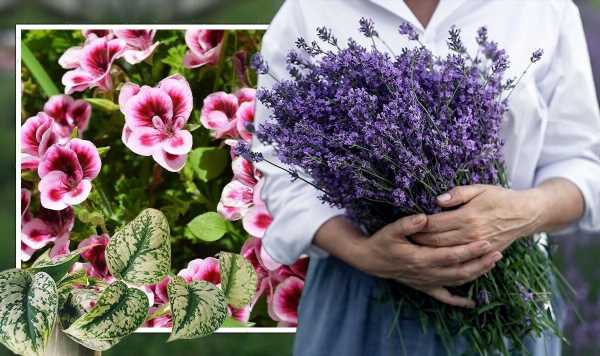Gardening: How to create a watering tool for your plants
We use your sign-up to provide content in ways you’ve consented to and to improve our understanding of you. This may include adverts from us and 3rd parties based on our understanding. You can unsubscribe at any time. More info
Established plants can be propagated to create young duplicates, but timing is crucial if you want to successfully grow plants taken from cuttings. Houseplants, bedding displays and garden shrubs can all be propagated, though different varieties should be cut and planted at different points throughout the year. Speaking to Express.co.uk, plant expert Elin Harryson, and gardening expert Calum Maddock revealed the best plants to propagate right now, and exactly how to do it.
Why is timing important for plant propagation?
Plants should be propagated at the right point in the growing season in order for the cutting to be successful.
Calum Maddock, gardening expert at Homehow said: “Timing is critical for propagation because if you wait until the roots have formed a root ball, the roots will be old, ‘pot-tight,’ and less likely to branch out. Don’t leave it too long for the roots to grow.”
Roses, hydrangeas and dahlias are just some of the plants ready to be propagated right now, but which other varieties can you duplicate in your home and garden this season?
Read More: ‘Inexpensive’ plants to inject colour into the garden this spring

Pelargoniums
Pelargoniums provide constant colour and fragrance throughout the summer and are easily propagated from cuttings.
Speaking to Express.co.uk, Elin Harryson, in-house plant expert at Plata said: “Although their cuttings can be taken at any time of the year, the best time to propagate pelargoniums is during the warm and sunny weather periods, as success rates can drop during autumn and winter.
“Softwood cutting propagation is ideal for any pelargoniums, just find a soft shoot and snip away from the plant, below the node where the leaf meets the stem.”

Lavender
This scented plant should be propagated when the cuttings are semi-ripe without any flowers for the highest success rate.
Water propagation is a simple method for lavender cuttings that are about 10-15 cm long, just place the stems into a container full of water to establish before being transplanted to a soil pot.
Coleus
Great for bedding schemes, borders, containers, and indoor pots, coleus will grow well when propagated in early spring and summer.
This stunning plant can be propagated from cuttings or seed – just make sure they have plenty of light in order to germinate.
DON’T MISS
What to do in the garden in May: Plants, weeds and pests [CALENDAR]
How to get rid of snails from your garden – 6 easy and natural methods [EXPLAINED]
Lawn care: Can you kill weeds using baking soda? [INSIGHT]
Begonia
Begonias provide a showy display of summery-colour which can be easily duplicated using a propagation box.
Elin said: “Using the begonia leaves as a whole or half, stick the fresh-cut that’s downwards on the plant into the propagation box, ensuring the node touches the substrate and is covered, but the rest of the leaf is not.
“Once you have set all the leaves, the propagation box can then be moved to a light and warm windowsill – but don’t forget to air it to prevent mould.”


Pothos
Also known as Devil’s Ivy, this variety is one of the most popular and impressive houseplants to look after.
This trailing plant can be easily propagated through layering, which involves selecting a healthy node root that grows above the soil.
To propagate this plant successfully, place the node into a new pot with damp soil or wrap the node with damp sphagnum moss and tin foil around it, to help keep the moisture in.
Elin explained: “When the pothos offshoot has formed its own roots and they are thick enough, separate the new plant baby from the mother plant and transplant it into its own pot to carry on growing”
It is important to note that every part of the pothos plant is poisonous, so it is essential to wear gloves when propagating through layering and keep away from children and animals.”
How to propagate plants successfully
There are several propagation methods which can be used to cut, divide and replant offsets of a parent plant, but what else should you do to make duplicate plants successful?
According to Callum, the best way to grow a healthy propagated plant is to:
- Prepare a container for the cutting to live in while it grows its own roots
- Use larger pots for stem propagation and shallow trays for leaf propagation
- Immerse stem cuttings in a rooting medium right away to keep the cut edge moist
- Mist the stem cuttings and seal them in an airtight container to get them growing
- Use less soil mix – typical potting soil becomes too rich for tender shoots. Cuttings perform best in a soilless mix
- Give your plants plenty of light – a grow light unit is an excellent choice that provides optimal conditions for fresh cuttings
- Keep propagated plants in a humid environment
- Use a coarse grit for hardwood cuttings and multi-purpose compost for softwood cuttings
- Always research the best propagation method for your plant
Source: Read Full Article
